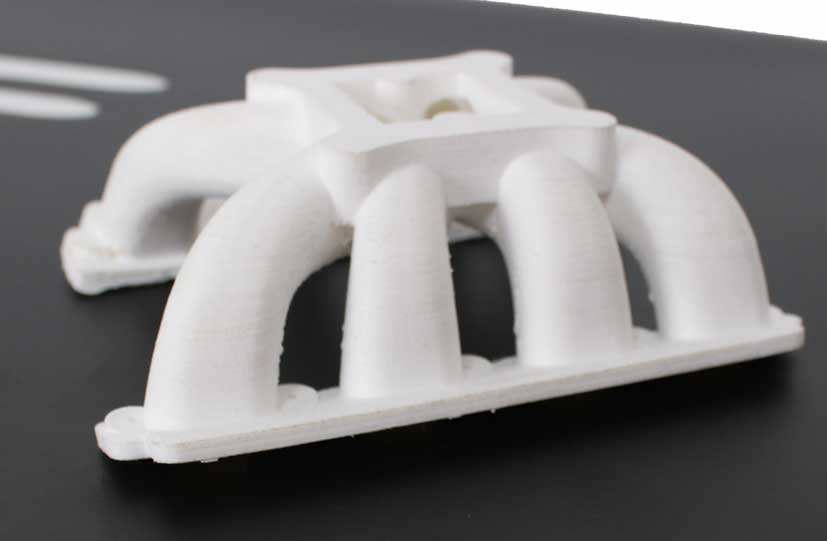
The trend towards professional desktop 3D printing continues with another materials announcement.
Formfutura, a Dutch supplier of quality 3D printer filaments for many years, has announced a pair of interesting 3D printer materials that seem targeted directly at the desktop professional market.
The first of the two filaments is STYX-12, a type of nylon that has some interesting properties. Billed as an “industrial grade PA12 Nylon”, Formfutura explains:
STYX-12 has a very low water absorption compared to other nylons and can be printed at relatively low temperatures. This combination of properties has resulted in high-performance and industrial-grade nylon which can be printed on a wide-range of FFF/FDM 3D printers.
The moisture properties are quite useful, as poorly stored nylon filament invariably gets corrupted with water, causing poor print quality. The new STYX-12 filament should alleviate that effect to some degree, making life slightly easier for those printing in nylon material.
When Formfutura says it prints at lower temperatures, they mean something between 240-270C, which just might be within the range of many more desktop 3D printers that otherwise might not have been able to print in nylon.
The other material announced by Formfutura is an unusual type of PLA, which they call “Volcano PLA”. The reason for the name seems to be the heat required to finish it. Let me explain. This material prints in the usual manner for PLA, at a temperature slightly higher than typical PLA at 220-255C.
Why so high? It’s a bit different. Formfutura explains:
Volcano PLA offers the same mechanical and thermal properties – after annealing – as most ABS filaments, but with the biodegradability and ease of printing of PLA. Volcano PLA combines a high heat resistance with high printing speeds and high impact resistance into a PLA-based filament engineered for industrial applications.
So this is a two-stage process: first you print, and then you anneal the printed object, which involves heating and cooling. Here’s how it works:
Annealing is a secondary process in which a plastic part is heated up to half of the melt temperature for a moderate period of time before letting the plastic part cool back down to room temperature.
When the plastic part is reheated (annealed) like this, the material relaxes and internal stresses and/or strains are relieved resulting in improved dimensional stability, reduction/removal of dimensional distortion and defects, and improved physical and thermal properties of the printed (and annealed) plastic object.
After this processing the objects printed in Volcano PLA will have a heat resistance of 95C, quite a bit higher than typical PLA, which tends to soften above 60C. This should enable this material to be used in many more real-life applications.
The two products are available now in both common 3D print filament formats. STYX-12 comes in only natural color at a price of €33 (USD$39) per 0.5kg. Volcano PLA is sold in several differently sized spools, including 0.75, 2.3, 4.5 and 8.0kg, with prices ranging from €30 (USD$35) to €240 (USD$281).
What’s interesting to me is that a company like Formfutura seems to have drastically changed their strategy to maintain flow with the rest of the industry. Years ago the company’s website would have been highlighting products such as “atomic green” or “robotic grey” PLA and ABS filaments. Now the focus is very clearly at professionals, as their product list now includes a wide variety of highly functional materials with less focus on consumer appeal.
Via Formfutura

